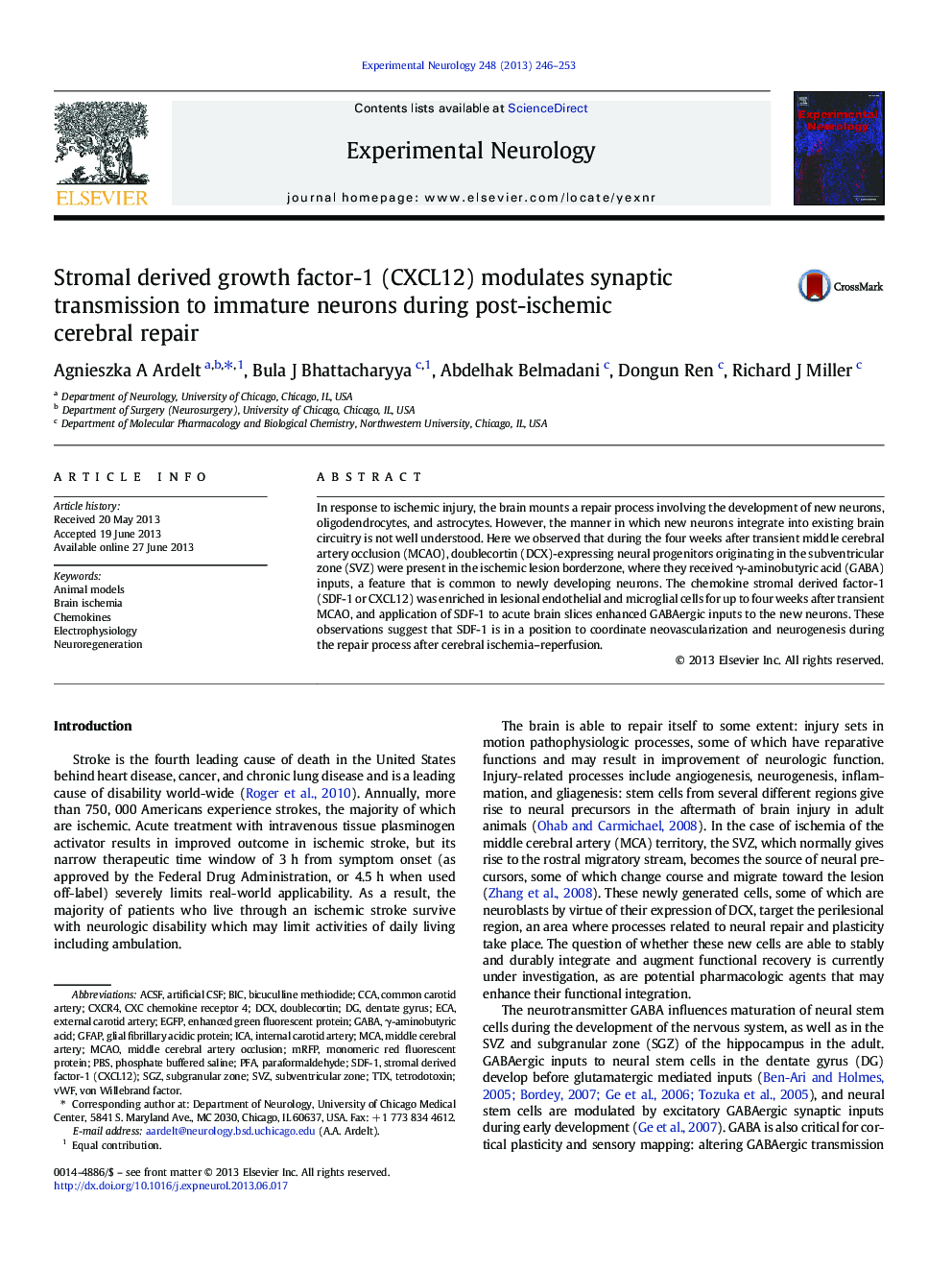| Article ID | Journal | Published Year | Pages | File Type |
|---|---|---|---|---|
| 6018082 | Experimental Neurology | 2013 | 8 Pages |
Abstract
In response to ischemic injury, the brain mounts a repair process involving the development of new neurons, oligodendrocytes, and astrocytes. However, the manner in which new neurons integrate into existing brain circuitry is not well understood. Here we observed that during the four weeks after transient middle cerebral artery occlusion (MCAO), doublecortin (DCX)-expressing neural progenitors originating in the subventricular zone (SVZ) were present in the ischemic lesion borderzone, where they received γ-aminobutyric acid (GABA) inputs, a feature that is common to newly developing neurons. The chemokine stromal derived factor-1 (SDF-1 or CXCL12) was enriched in lesional endothelial and microglial cells for up to four weeks after transient MCAO, and application of SDF-1 to acute brain slices enhanced GABAergic inputs to the new neurons. These observations suggest that SDF-1 is in a position to coordinate neovascularization and neurogenesis during the repair process after cerebral ischemia-reperfusion.
Keywords
PBSNeuroregenerationmRFPSVZSGZCXCR4MCAODcxTTXaCSFPFACCAvWFSDF-1MCAICAeGFPGFAPBICECAγ-aminobutyric acidElectrophysiologymiddle cerebral artery occlusionBrain ischemiatetrodotoxindoublecortinmiddle cerebral arteryexternal carotid arteryinternal carotid arterycommon carotid arterydentate gyrusVon Willebrand factorPhosphate buffered salinebicuculline methiodideAnimal modelssubgranular zonesubventricular zoneparaformaldehydeGlial fibrillary acidic proteinenhanced green fluorescent proteinmonomeric red fluorescent proteinChemokinesGABACXC chemokine receptor 4
Related Topics
Life Sciences
Neuroscience
Neurology
Authors
Agnieszka A Ardelt, Bula J Bhattacharyya, Abdelhak Belmadani, Dongun Ren, Richard J Miller,
